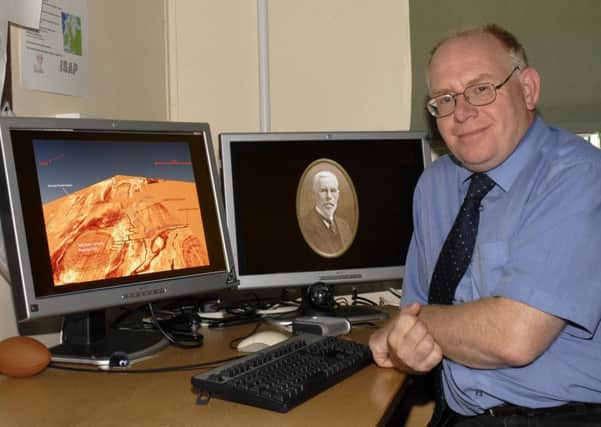Bringing to life ancient land lost under sea


They will digitally re-construct a prehistoric country approaching the size of Ireland that, following climate change after the last Ice Age, was covered by rising sea levels and now lies beneath the North Sea.
Using modern genetics and computing technologies researchers will digitally repopulate this ancient country, called Doggerland, monitoring its development over 5,000 years to reveal important clues about how our ancestors made the critical move from hunter-gathering into farming.
Advertisement
Hide AdAdvertisement
Hide Ad“The only populated lands on earth that have not yet been explored in any depth are those which have been lost underneath the sea,” says Professor Vince Gaffney, anniversary chair in landscape archaeology at the University of Bradford, who is leading the project.
He added: “Although archaeologists have known for a long time that ancient climatic change and sea level rise must mean that Doggerland holds unique and important information about early human life in Europe, until now we have lacked the tools to investigate this area properly.”
Archaeologists, molecular biologists and computer scientists will work together on the project which is being backed by a €2.5m grant from the European Research Council and which aims to understand how humans lived in this area from around 10,000 BC until it was flooded at the end of the last ice age around 7,500 years ago.
The team will produce a detailed 3D map that will show rivers, lakes, hills and coastlines in a country which had previously been a heartland of human occupation in Europe but was lost to the sea as a consequence of past climate change, melting ice caps and rising sea levels.
Advertisement
Hide AdAdvertisement
Hide AdAlongside this work, specialist survey ships will recover core samples from selected areas of the landscape. The cool, underwater environment means that DNA is better preserved and offers archaeologists a unique view of how society and environment evolved during a period of catastrophic climate change and in a prehistoric country that had previously been lost to science and history.
The data, together with conventional environmental analysis, will be combined within computer simulations and will allow the team to build a comprehensive picture showing the interaction between the environment and the animals and plants that inhabit it throughout the period – around 5,000 years.
“This project is exciting not only because of what it will reveal about Doggerland, but because it gives us a whole new way of approaching the massive areas of land that were populated by humans but which now lie beneath the sea,” added Professor Gaffney.
“For the first time in the North Sea, we will be able to carry out a targeted and purposive investigation of a series of sites on the seabed,” said Dr Martin Bates.
Advertisement
Hide AdAdvertisement
Hide AdThe project is led by Professor Gaffney, and the research team includes Professor Robin Allaby at the University of Warwick, Dr Martin Bates from the University of Wales Trinity St David, Dr Richard Bates from the University of St Andrews, Dr Eugene Ch’ng at the University of Nottingham, Dr David Smith at the University of Birmingham and independent researcher, Dr Simon Fitch.